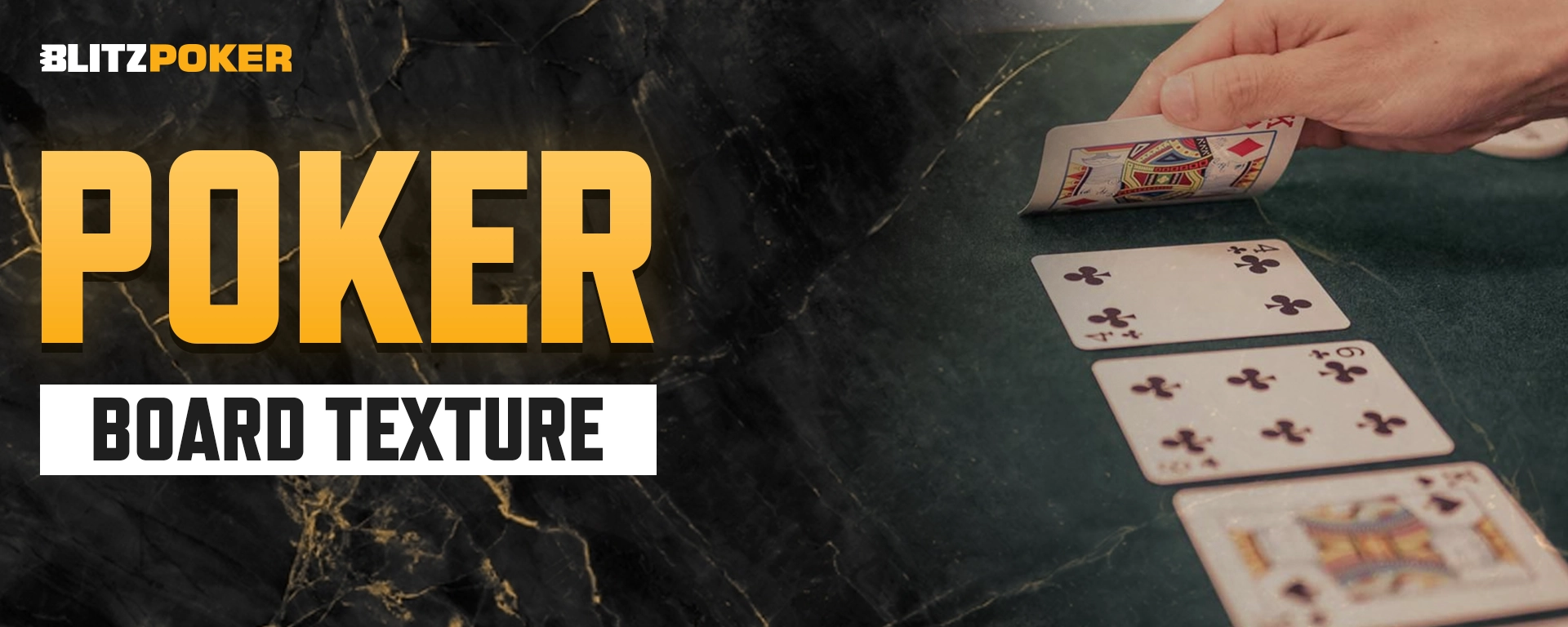Board Texture in Poker | Poker Wet vs Dry Board
Board texture in poker is vital as it shows how the flop’s community cards link with common hand ranges. It forms the base for postflop tactics, shaping choices on bet size, frequency, and overall strategy. This term describes the three flop cards’ arrangement and their connection to potential hands. For instance, it considers if the board might create straight or flush draws, if the cards are high, or if the board is paired. Grasping board texture is key since it impacts how a player’s range fits the flop, shaping the tactics they use in no-limit Texas hold ’em poker. The two main types of board texture—wet and dry board—each bring their own challenges and opportunities to the game. Recognising these textures and adjusting your play accordingly is essential for success. Take your skills to the next level by mastering board textures at BLITZPOKER, where smart strategy can lead to real daily winnings.
What Is a Poker Dry Board?
A dry board is tough to connect with. For instance, a flop like Q 9 2 without a flush draw is a classic example. Another is K 7 2, also lacking a flush draw. Dry flops mean fewer players have strong hands, making them ideal for continuation bet bluffing.
What Is a Wet Board in Poker?
A wet board, on the other hand, offers various connections for both made hands and draws. Examples include flops like Jd 8d 6s, Kh Jh 9s, and Qd Jd 10h. These textures hit multiple hand ranges, making postflop play more complex. With a wet board, hands like two pair or straights occur more often, putting top pair at risk.
On wet boards, expect less fold equity with continuation bets compared to dry flops. However, this dynamic also opens up chances to bluff later in the hand.
For example, you might call a bet on the flop and turn with a second pair. But if the river completes some draws, it could be smarter to turn that second pair into a bluff by raising your opponent’s bet. This kind of thinking separates good players from those who stick to a basic strategy and earn minimal profits.
Why Understanding Poker Board Texture Matters
Good poker players make educated guesses about their opponent’s likely hands. Some poker board textures make our opponent stronger, while others leave them weaker.
By understanding board textures, we can play more aggressively when our opponent is likely weak, and more cautiously when they are likely strong.
How well a player connects with the board often depends on whether they were the preflop aggressor or the preflop caller. Here’s a quick reminder of those terms:
- Preflop aggressor – The player who makes the last aggressive move during the preflop betting round.
- Preflop caller – The player who ends the action in the preflop betting round by calling.
